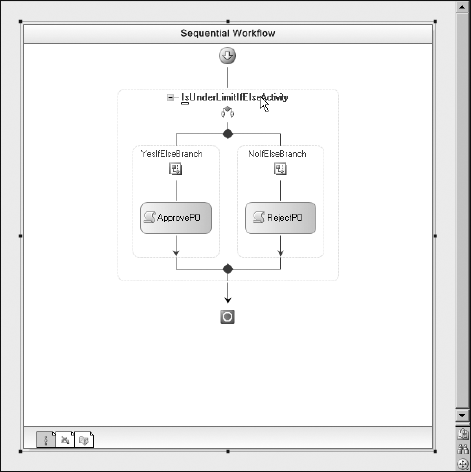14.1. Introducing Windows Workflow Foundation
This section introduces WF and its key concepts. WF is worthy of a book in its own right, so consider this a primer to help you to understand what WF offers. By the end of this chapter, you should clearly understand how WF synergizes with BizTalk Server.
14.1.1. Workflows
A workflow represents the implementation of a particular process in the same way as a BizTalk orchestration. In fact, the team behind BizTalk Orchestration (XLANG) formed a large part of the WF development team! It's worth noting that all software, not just BizTalk, has elements of workflow, but these are typically represented as code. A common workflow foundation such as the one provided by WF enables workflow to be expressed and used across any application on the Microsoft platform in a clear and consistent way.
BizTalk orchestrations allow the implementation of sequential processes. Sequential processes are well suited for system-based workflow in which the steps are known ahead of time and executed in an identical manner each time.
Figure 14-1 shows an example sequential process designed using WF.
Figure 14.1. Figure 14-1

WF workflows can be implemented out of the box as either sequential workflows or state machine workflows. You can also customize your own workflow type as required through the extensibility points provided. This is a significant departure from ...
Get Professional BizTalk® Server 2006 now with the O’Reilly learning platform.
O’Reilly members experience books, live events, courses curated by job role, and more from O’Reilly and nearly 200 top publishers.

